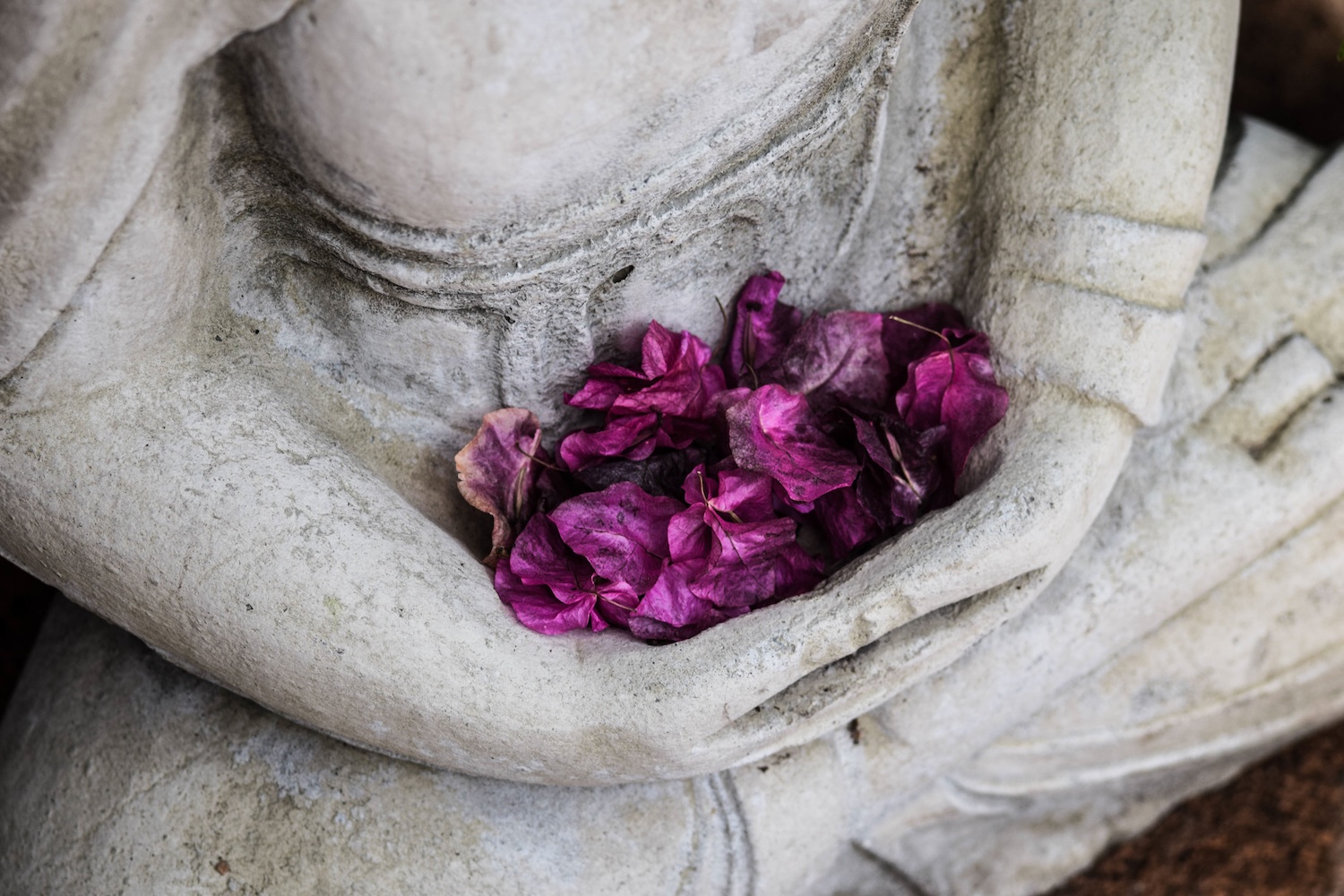Meditation is a hot topic.
It seems like everyone is doing it, or at least talking about wanting to do it.
Ellen, Oprah, Hugh Jackman and other famous folks praise the impact meditation has on their body and mind. Ray Dalio, widely regarded as the most successful hedge fund manner of all time, says this regarding the impact meditation has had on his life:
“When I look back at my life, I am happy to have had what most people would consider a successful life, not only regarding business but in my relationships and in lots of ways. More than anything else, I attribute it to meditation—partially because of the creativity, partly because of the centeredness. TM has given me an ability to put things in perspective, which has helped a lot. I think meditation has been the single biggest influence on my life.”
The appeal of meditation is that it is universally accessible, requires no formalized training, is free to practice and is said to alleviate many of the mysterious ills of society – including stress, anxiety, depression and a host of other disorders. People have been meditating for thousands of years, and with that kind of track record, it surely isn’t a fad.
In the modern “life hacking” era of everyone wanting a shortcut to success and happiness, meditation is the ultimate life hack that few people are actually using.
The promise of meditation as a potent cure for life’s ailments is what makes people curious about it. However, the number of individuals who develop a long-standing meditation practice are few and far between.
I think that the simplicity of meditation leads many to waste time looking for elaborate techniques and methods to support the process, instead of simply sitting down and closing their eyes. Others, once starting down the meditation path, confront challenges that cause them to give us the practice altogether.
Simple and easy are two different things. Meditation is the ultimate challenge. Its simplicity is a disguise.
This blog post is designed to share my experience as a meditator for the past 27 years. In doing so, I will provide some simple guidance for those looking to get started with their meditation practice in earnest but aren’t sure where to begin.
I won’t spent too much time trying to convince you of the numerous benefits of a daily meditation practice. A few internet searches will uncover hundreds of research studies citing the merits or check out Dr. Lazar’s Harvard-sponsored research on the neuroscience of yoga and meditation for the cold, hard facts.
1) How to meditate
Meditation should be done intentionally and not as part of any other activity.
I try not to roll my eyes when I hear people say that “their daily walk is their meditation” or “their workout is their meditation.”
Exercise is great. So is gardening, cooking, spending time with family, Hot Yoga and countless other daily activities. Those things, however, are not meditation. They should complement a dedicated meditation practice, not replace them. There are no exceptions to this!
To meditate, you must find a comfortable seat, preferably seated cross-legged directly on a firm surface, such as the floor. Do not meditate in bed unless you want to fall asleep! If your hips are too stiff to sit on the ground, use a meditation cushion. If your joints aren’t flexible enough to sit on the floor, sit in a chair. If you aren’t on the floor, spend time practicing yoga postures to allow yourself to sit on the ground eventually. My dad, who is almost 80, meditates while sitting cross-legged on the floor. We all should aspire to do the same.
What about the rest of your posture? Close your eyes. Breathe through your nose. Relax your shoulders. Allow your belly to rise and fall in a relaxed and unrestricted manner.
I find it helpful to stick my tongue to the roof of my mouth. It aids in concentration.
I also fix my eyes (with eyelids closed) to either a point between my eyebrows or direct them to a point at the top of my head. Directing the eyes is crucial. When the eyes are fixed on a single point, even with the eyelids closed, you will find that your thoughts are much less distracting.
Your location should be quiet. Pick a spot that is free from the distraction of kids, animals or cell phones. Yogis used to retreat to remote caves for intensive meditation periods. For you, just find a quiet room. Use earplugs if need be.
Morning is best. Why? Your brain is not polluted by a day full of conscious thinking. You will find it much easier to go deeper into meditation in the morning. Meditating in the evening is also useful. However, it has a different quality to it. It can help with alleviating daily stress and allow for more restful sleep. However, begin with a consistent morning meditation practice and then add in an evening session if you can.
Use a stopwatch (I use the built-in timer on my phone) and pick a duration for your meditation. Most meditation teachers will agree that frequency is more important than length. This means that it is better to meditate for 5 minutes a day, every day, than sitting for one marathon 60-minute session just once a week.
Get in a daily rhythm of meditation.
Extend your duration gradually over time. Those who are completely new should start at 5 minutes per day, in the morning. Each week, or as you feel ready, extend the time by one minute. There is no optimal duration. However, many teachers advocate for 20 minutes sessions, twice a day. Research shows that anecdotal benefits are seen with 10-minute sessions whereas larger scale research shows that those achieving an average of 20–40 minutes of daily meditation realize tangible benefits.
The most crucial point is to commit to a consistent rhythm and stick to it! I’m currently sitting for 10 minutes each and every morning. Your experience is the only thing that matters. If you get a benefit from 10 minutes, then do 10 minutes. If you find yourself not going deep enough in 10 minutes, build up to a longer duration. You will find that with practice, even a short 5-minute meditation can have a significantly positive impact.
2) Focus of meditation
What should you focus on during meditation?
There are infinite possibilities, which creates a lot of confusion for beginners.
There are some who believe that the aim of meditation is to cultivate mindfulness of present-moment awareness. This requires tuning into the sense organs and noticing the flow of the breath and all the sensations of the body. Mindfulness has seen a surge in popularity of late. It is a dogma-free practice that is very accessible to practitioners who want to meditate, but don’t want the “woo-woo” feeling of mantra-based meditations or simply have no desire to dabble in Eastern mysticism.
Mindfulness Based Stress Reduction teaching will fit into this method of practice, as would Vipassana, Zen and many Buddhist styles of meditation practice. The idea with these practices is to notice the impermanence of our everyday awareness, and in doing so gain a sense of detachment over the pulls and tugs of daily life. Mindfulness is a profound practice and is ideal for everyone.
There are others, who instead focus on inward concentration on the thought of a mantra, feeling of energy or even an idea or concept. Art of Living, Transcendental Meditation, and the Indian Yoga traditions tend to fall into this style of meditation practice. The idea with these practices is to concentrate on a single object or idea, and in doing so, transcend attachment to thoughts and gain access to higher states of awareness. This is what people refer to as a meditation practice.
You might contrast these two methods as meditation vs. mindfulness. One is about embracing a dynamic present-moment awareness whereas the other is about embracing concentration on a fix-point.
The truth is that these two methods are deeply intertwined. Mindfulness leads to meditative states and meditation leads to greater mindful awareness. They are like two sides to the same coin and really do reinforce each other.
The question really is, where to begin?
I practice a mantra-based meditation. The mantra is consistent, though every now and then I have played around with different ones. It’s not a secret mantra, and I didn’t pay anyone a dime to get it. It’s part of my Hindu Vedic upbringing. I chose it after hearing a meditation teacher mention it to me. I used it and found that it fit my personality. That was ten years ago, and I’ve been using it ever since. Before that, I was meditating on the Gayatri Mantra, which I learned when I was very young. Occasionally I float back to Gayatri.
I do what I do since it was part of my upbringing. If you have no exposure to Hindu or Vedic tradition, using a mantra of Sanskrit words may not be significant or meaningful to you as it is to me.
Instead, I recommend that most beginners start with a mindfulness focus on the breath. It’s a remarkably challenging practice. Follow your breath in and out. Feel the breath reach every cell of your body. With every inhale and exhale, notice how you are breathing the same air that is being breathed and has ever been breathed by the entire world.
If you notice that focusing on your breath is challenging, or even anxiety producing, than switch to another object of meditation. You may choose an emotion, like gratitude or compassion, or even a symbol that has meaning to you. Compassion
The critical thing is that you pick something and start. Be consistent for the first few months of your meditation practice. Once you have a regular practice, then you may wish to try different meditation techniques. Therefore if you are meditating on your breath, stick with it for a few months. If you have a mantra, stick with it for a few months. Jumping around between methods too often can slow progress down and cause you to abandon the practice altogether. You can meditate on the breath, mantra or any other focal point for an entire lifetime if you wish.
Don’t let “bright shiny object” syndrome distract you from the work that really matters, which is your consistent practice!
3) Find a teacher and community
Every long-standing meditative tradition that I know of has a culture of students learning from experienced teachers. To the monasteries in Tibet or Japan to the Ashrams in India, meditators have always learned from teachers and engaged together in group meditation practice periodically.
A good teacher can save you years of struggle by offering tips and suggestions that would be impossible to catch on your own. For example, a teacher might provide a stretching (Hatha Yoga) routine to help you calm your nerves before meditation, making the time you sit much more efficient. They might offer you a unique object of meditation, such as a mantra or particular sound, that will be easier to capture your focus than just focusing on your breath. They might even lead you in a guided meditation that will take you deeper than you could go on your own.
Good teachers will often have groups learning together. Meditating with a group can be a very powerful experience. Especially as a beginner, sitting to meditate for an hour can be tough. In a group, however, time can fly by! Dropping into a mediation group can also help you keep up with your practice. Nothing like positive peer pressure!
Should meditation instruction be free?
Some folks have hang-ups over people charging for meditation or mindfulness training. The way I look at it is that meditation teachers (and yoga teachers in general) are offering a valuable service, and they have families to feed and lives to live. If they are skilled at what they do, charging a reasonable amount isn’t a bad thing. In fact, people pay attention and follow-through on the things they pay for!
Of course, there are some meditation schools, (like Transcendental Meditation) that charge a lot (in the thousands so I’ve heard, just to learn their trademarked form of meditation) and also have an air secrecy around their exact methods, not to mention the various “ranks” they bestow on TM practitioners who achieve supposed levels of achievement (e.g. they have a special “Siddha” status for advanced practitioners). The exclusivity rubs me the wrong way. Meditation should be accessible for all. I’ve never personally studied TM, though there are many advocates for it, especially among celebrities.
Here is what I recommend regarding finding a meditation teacher:
- First, don’t wait to attend a class to start meditating. Start today!
- Then, look around for a good teacher or group to join. Learn from them and incorporate what you learn into your practice. I’ve learned a half-dozen styles of meditation from various teachers over the past 27 years. They have all given me deeper insight into the daily practice I call my own.
- Check out your local yoga studios for meditation workshops and classes.
- Check out Mindfulness Based Stress Reduction for mindfulness-based teachers in your area if you are interested in that style, free of any dogma or use of mantras.
- The Art of Living hosts reasonably priced breath-work and meditation classes worldwide. It’s based on the yoga tradition, originating in India. I’ve heard good things about their teaching, and it seems to have much less of the exclusive and high-cost vibe that appears to grip the TM movement.
- Lastly, just use Google. Search for meditation classes and centers near you.
Above all, find a quiet space and sit still for a few minutes. Focus on your breath or another object or emotion of your choosing. Rinse and repeat!








For as long as I can remember my mornings have been a time to just be. I wouldn’t call it meditation but i would call it meditative. The air, the sun, the clouds, the birds and the snow are all a reason to be grateful, to be thankful. I’ve always been a deep thinker and it is a way to focus on what’s around me rather than my intense thought process. Even with an appreciation for life and nature as the day goes on I lose the effect of the calmness. Not everyone in my life understands the value of inner peace. I get pulled into drama and the overreaction of others. My sensitivity takes over my ability to remain calm and I respond to the chaos that undoes my morning routine. Some days are worse than others.
I have occasionally made the effort to concentrate on my breathing. Closing my eyes and being aware of my existence on was a different kind of experience. I could feel my shoulders, neck and torso relax and release tension. As good as it felt I never got in the habit of doing it consistently. For the most part my current morning routine does work. I figure life can be relentless and I go with the flow and accept the ups and downs.
Going with the flow – “acceptance” – is a very profound way of being. Thanks for sharing!
Awesome article and great overview of the meditation options that are available out there!
I aim to please!